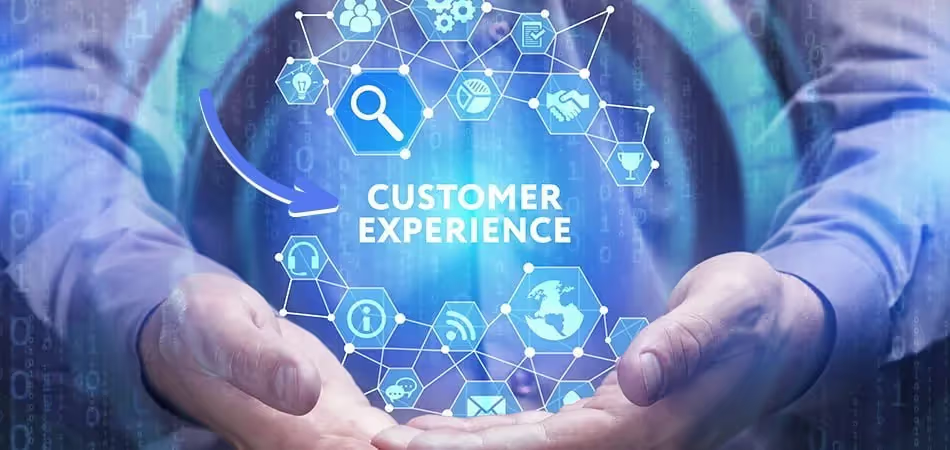

Companies are investing heavily in tools and technologies that will help them better understand their customers, but the backbone of CX efforts still remains survey-based measurement systems from decades ago.
Companies use these systems to monitor customer experience performance through brand or relationship surveys, “closing the loop” on the feedback from post-transaction survey questions and even planning strategic steps by attempting to mine the data from regular customer satisfaction surveys over time.
Entire teams dedicate themselves to managing questionnaires while boosting response rates––and such metrics can shape everything from employee bonuses and executive compensation all the way to strategic investment decisions!
Survey-based measurement systems may be failing to meet today's CX needs, but surveys themselves are an important tool for conducting research.
A few leading companies are taking advantage of the wealth of data now available. These days, it’s possible for a company to collect smartphone and interaction data from all customer, financial, and operating systems in order to get deep insights into their customers. Those with a forward-thinking mindset are boosting their data and analytics capabilities to better understand customer behavior, identify CX issues before they happen, anticipate future needs - all in real-time. For example, these companies can quickly compensate for the inconveniences of flights getting delayed or offer assistance after patients have trouble resolving problems at an insurance company.
We live in a world where customer experience has never been more important.
So, in this article, we will explore how data and analytics are beginning to transform the CX by bringing clarity to the survey-based measurement systems. We will take a look at some of the CX leaders who took the initiative to implement these data-driven CX systems and in turn, boosted the revenue, lowered the cost to serve, and reduced the churn rates as well!
In the final section of this article, we will cover how you can become more data driven and what it takes to get started.
The benefits of CX programs do not come automatically. Those just starting out will face many challenges and organizational resistance. But with commitment to success you can overcome these obstacles and transform your company's customer experience from mediocre to extraordinary.
The shortcomings of traditional CX measurement
Surveys are a good way to find out what customers think, but they aren't the best measurement tools for assessing the CX performance and identifying and acting on the CX opportunities.
In order to make a company customer-centric, it is necessary to have a comprehensive view of the full journey and apply a deep insight into what's driving your customers' experience. CX depends on the systems that are able to provide immediate and individual signals so you can create relevant experiences for each customer in the moment.
Based on McKinsey customer experience survey, survey-based systems have four flaws that prevent them from performing these functions effectively.

1. Limited
A typical CX survey samples only 7% of a company’s customers, providing an extremely limited view on their experience. And only 13% of the leaders surveyed expressed full confidence that their measurement system provides representative views to everyone in their customer base.
2. Reactive
In a world where customers expect their concerns to be resolved increasingly quickly, surveys are not helpful because they provide insight on the past. Nearly two-thirds of respondents rank the ability to act on customer issues in near real time as one of their top three priorities, but only 13 percent of business leaders can state with certainty that their organizations have been able to achieve high/significant levels of immediate insight through existing systems.
3. Ambigous
Surveys often fail to reveal the root causes of customer sentiment, and they are easily influenced by other external factors. Only 16% of CX leaders say that surveys provide them with granular-enough data for addressing the root cause of CX performans.
4. Unfocused
Businesses are not very clear about the connection between the survey-based scores and business outcomes, so some parts of an organization will just claim that they have increased their revenue because they implemented a CX initiative without any evidence.
Recently, many companies have come under fire for basing investment decisions on a survey-based score alone. Only 4% of the CX leaders surveyed said that their system allows them to calculate the ROI from investing in customer experience (CX).
Predictive customer insight is the future
In today's digital age, companies have access to an abundance of different data sets.
The first is internal on customer interactions and transactions from both analog and digital sources. Second are widely available third-party data which offer insight into consumer attitudes, purchase behaviors, and preferences in addition to the individual's social media activity like Facebook or Twitter feeds for example. Thirdly there are new types of datasets generated by technology that gives firms information about their customers' health status as well as sentiment towards a company all while providing precise locations.
Other business disciplines like marketing and revenue management have been transformed through the aggregation of vast data sets.
A survey may seem like a simple way to ask customers about their experiences..
But why conduct a survey when the data from customer interactions can predict not only satisfaction rates but also how likely the customers are to remain loyal or increase business for your company?
A number of customer experience leaders have taken the plunge and begun using data to draw valuable insights that can prompt alerts and lead them to improve their customers' experiences. The specifics may vary across companies, but they all use a predictive customer-experience platform consisting of the following three key elements:
1. Customer-level data lake
To begin with, a company collects customer, financial, and operational data, both aggregate and personal. These data are processed and stored on a cloud-based platform by the company. Customer-level datasets that are comprehensive, connected, and dynamic allow the company to map and monitor customer activity through interactions, transactions, and operations.
Imagine if you knew exactly what your customers are thinking about at any given moment. Wouldn't it be great to know the root causes of their performance and how they are feeling?
The power of customer surveys lies in their ability to capture a single point in time, but, by combining that with extensive data from other sources, we can see firsthand just how people are feeling throughout the entire journey - giving us much more insight into when and why things go wrong.
A data lake is a great way to get deep insights into your customers. It should be reliable throughout the organization and have clear, consistent mapping across all data sources with unique identifiers for each customer in order to understand them better.
2. Predictive customer scores
The company develops analytics to understand and track what is influencing customer satisfaction, business performance, and specific events in different stages of customer journey.
Based on aspects of a customer journey, the algorithms generate predictive scores for each customer. Individual customer satisfaction and value results such as sales, loyalty, and cost to serve can all be predicted using these scores. They also allow CX leaders to evaluate the ROI for specific CX investments and directly link CX initiatives to business outcomes.
3. Action and insight engine
By using APIs, customer service agents can share information with one another and learn from each other. This means they're better equipped to provide quality care to customers because the agent will know what has been happening in your company's interactions so far.
Agents, for example, will be notified of the steps they need to take to personalize customer experiences and enhance CX results. The API layer acts as a single source of truth for recommendation engines that use data from the data lake as well as customer scores. Importantly, unlike survey-based systems, a predictive platform offers timely insights and enables rapid action, both by employees and digital interfaces.
Predictive CX platforms have made it possible for businesses to more accurately measure and manage their customer experience. These systems also give companies a better understanding of the factors that contribute to customer satisfaction, which in turn helps them identify opportunities for improvement.
In the future, predictive CX platforms will be able to anticipate customers’ needs and desires. Performance management, strategic planning, and real-time customer engagement are just a few of the applications that the leaders, who have designed such frameworks, are using to create a significant value.
How to turn data into insight and action

Transitioning to predictive insights isn't going to happen overnight.
In fact, many companies are still relying on surveys as a way of gauging customer sentiment. Fortunately, for those leaders that want their CX programs to reach the next level and enable them to make progress, we've identified four key steps you can use in order to make this transition successful:
1. Work on changing mindsets
The transformation will certainly be challenging, at least because both teams and CX executives will need to change their mindsets.
Predictive systems may appear to leaders as beyond their purview, or outside the domain of an IT department or a data-science team. However, times have changed and today's CX leaders must rely on data rather than a single CX score, as they once did. Some may argue that their company has already carried out a regression analysis of a few key performance indicators. It's time to think bigger and bolder and create a system rather than just playing with numbers.
Executives may need to reposition themselves within their companies as the role of a CX leader evolves. “People associate CX with marketing, not technology,” one chief experience officer said when asked about the current system's biggest problem. As more and more businesses adopt predictive analytics, this is changing, and it is up to CX leaders to help encourage the change in perspective.
2. Build cross-functional teams and break down silos
Within an organization, CX functions often fall into the trap of creating their own silos.
CX leaders must better align with the rest of the company to begin the transition.
Since data owners will invariably cover processes, marketing, finance, and technology, senior leadership collaboration will be essential to ensuring effective data access and management. (Of course, data scientists will be the ones writing the algorithms, not CX professionals.)
Since the CX team had a good relationship with the service company and could easily show value, one travel-industry client started its data-driven system with a focus on providing real-time improvements to its customer-service operation.
The customer-service organization was the first recipient of an initial minimum viable product. The data science team developed this new innovative product, and CX acted as a business owner with close collaboration from all departments in order to launch it successfully.
Outside of the core team, an advisory board consisting of the COO, CFO, and chief marketing officer kept track of progress and offered suggestions for potential use cases, so that when the initial pilot was a success, the COO had already been on board for another use case in his company. Even for smaller-scale initiatives—for example, when a company employs contractors rather than forming an in-house data-science team—strong, cross-functional relationships at the development and steering committee levels will be critical to building and scaling the CX insight engines of the future.
3. Begin with a simple collection of journey data and add to it as the accuracy improves
Data quality and availability are the issues that most organisations face, and without data, this transition is impossible.
The good news is that even if the data isn't flawless, companies can get started with simple customer-level data. The first move is to gather operational and financial data at the individual customer level. A solid starting point is typically a mix of consumer profiles, as well as digital and analog interactions.
Teams should create a comprehensive journey taxonomy that includes all of their customer base's possible drivers of satisfaction. The taxonomy can be used to generate hypotheses, resulting in new measurable attributes that can be used in the predictive model.
These attributes, known as data features in machine learning, can range from numeric properties like a customer's annual spend to binary properties like whether they bought something online or in a shop. Understanding the features in the machine-learning model is important—and comparing them to the team's hypotheses—can help organizations identify where data is unreliable or incomplete over time, and adjust their data-acquisition strategy accordingly.
If data for some features isn't available, teams may look at acquiring new datasets (for example, credit-agency data) or using new instrumentation to produce the features that are needed (for example, IoT sensors to map customer interaction points in physical environments). Datasets will become more robust as the machine-learning algorithm ingests more data and produces its own insights, proving useful across various business applications.
Eventually, businesses can look to incorporate data from various sources during the consumer journey, such as chat, phone calls, emails, social media, applications, and IoT devices. All data collection, storage, and use should adhere to privacy and cybersecurity best practices, regardless of the source. (Notably, as customers become more cautious about sharing data and avoid or stop doing business with the companies whose data-security policies they don't trust, our colleagues have discovered that customer-data privacy can serve as a source of competitive advantage.)
Organizations should stick to regional data regulations and exclude any variables that directly relate to the protected groups, such as race and religion. Before being processed, all identifying details should be encrypted and anonymized. Finally, regular risk reviews will help in the detection of algorithmic bias in customer experience systems. CX leaders must understand what their businesses are doing to protect consumer data, minimize bias, and ensure fairness in their predictive systems.
Early on, it's important to have a good picture of how the insights will be used and to concentrate on a few particular use cases that will yield immediate results.
4. Begin with the use cases that can provide immediate value
CX organizations have a unique opportunity to connect CX strategies to measurable business value thanks to data-driven, predictive systems.
Organizations can use a simple framework to look for major sources of opportunity, pain points, or both, through current consumer journeys and consider how a predictive system might generate new solutions or improve existing ones, potentially impacting loyalty, cost to serve, cross-sell, and up-sell behaviors.
One organization, for example, used its predictive system to improve its issue-resolution process after discovering that its contingency funds, which had previously been distributed evenly among customers, could be used more strategically.
The company created an algorithm that could classify high-priority customers based on lifetime value and recent experiences (such as the length of time the customer was without service in the previous month), and it used the algorithm to allocate contingency funds to dissatisfied, high-value customers. This first use case was a success, allowing the company to save more than 25% of its planned budget and open the way for future applications.
Leaders should consider what use cases provide a clear opportunity to demonstrate value in a proof of concept in order to gain traction and support.
Conclusion
Survey-based systems are nearing the end of their usefulness as a benchmark for identifying and optimizing a company's customer experience performance.
Data-driven, predictive technologies are the future of superior customer-experience efficiency, and businesses that can better understand what their customers want and need will have a competitive advantage.

















.svg)
.svg)
.svg)
.svg)
.svg)

.svg)
.svg)












.svg)
.svg)




.png)


















